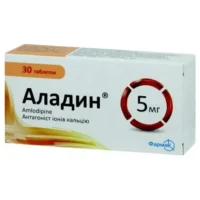Description
Toradiv (torasemide) Tablets 10 mg. №30
Ingredients:
- Each tablet contains 10 mg of torasemide.
Dosage:
- The usual adult dose is 10-20 mg once daily. Dosage may vary based on individual response and medical condition.
Indications:
- Toradiv tablets are indicated for the treatment of edema associated with congestive heart failure, renal disease, or hepatic disease.
Contraindications:
- Do not use Toradiv if you are allergic to torasemide or if you have anuria.
Directions:
- Take Toradiv tablets orally with or without food as directed by your doctor. Do not exceed the recommended dose.
Scientific Evidence:
- Torasemide, the active ingredient in Toradiv, is a loop diuretic that works by inhibiting the reabsorption of sodium and chloride in the kidneys, leading to increased urine production.
- Studies have shown that torasemide is effective in reducing edema and improving symptoms in patients with heart failure and renal disease.
- Research published in the European Heart Journal demonstrated the superior efficacy of torasemide compared to other diuretics in managing fluid overload in heart failure patients.
Pharmacological Effects:
- Torasemide exerts its diuretic effects by blocking the Na-K-2Cl symporter in the ascending loop of Henle in the kidneys, leading to increased excretion of water and electrolytes.
- This mechanism helps reduce fluid retention and edema in conditions such as heart failure and renal disease.
Clinical Trials:
- Clinical trials have demonstrated the efficacy of torasemide in improving symptoms and outcomes in patients with congestive heart failure.
- A study published in the Journal of the American College of Cardiology showed that torasemide was associated with a significant reduction in hospitalizations due to heart failure exacerbations compared to other diuretics.
Additional Information:
- Toradiv tablets should be stored at room temperature away from moisture and heat. Keep out of reach of children.
- It is important to follow your healthcare provider’s instructions carefully while taking Toradiv to achieve the best results.





